The 2025 spring turkey season is finally here. The year's first gobbler hunters took to the woods in Florida and Hawaii yesterday morning, and all through the Deep South, puffed-up toms are already spinning in circles and gobbling their heads off. Yes, most of us still have weeks to wait, but our turn is just a few more welcome warm fronts away.
To help you have your best spring hunt ever, we've recruited 15 expert turkey hunters from all around the county to answer the two questions on every turkey hunter's mind going into the season: (1) When are toms going to gobble and come to calls in my neck of the woods? And (2), What are the best tactics for filling my tag?
The answer to the first question depends heavily on location, of course, so we've divided the country into eight regions and asked our experts to pick their favorite three- to five-day period to hunt within each one. As every turkey hunter knows, there are days when it seems like there isn't a turkey within 10 miles, and there are days when gobbles echo all around the woods and the bird come running. Knowing which is which makes all the difference, so that's the focus of this article. In five follow-up stories, our experts will also share their top tips for tagging a tom in each of five breeding-cycle phases, from the early season through the last days of the spring hunt.
Related: How to Hunt Turkeys: Essential Tactics for Spring Gobblers
5 Phases of the Turkey Strut
Speaking of strut phases, you can't really talk about the best times to hunt spring gobblers without a basic knowledge of how the breeding cycle progresses. Just as with the whitetail rut, turkey breeding basically follows a bell-shaped curve of action, which can broken into a handful of phases. And while the exact timing can be affected by weather, pressure, and other factors, recognizing these phases can be a huge skill to master for hunters, as turkey behavior can dictate how you hunt. With that in mind, here are the five basic phases of the turkey strut.
Pre-Breeding
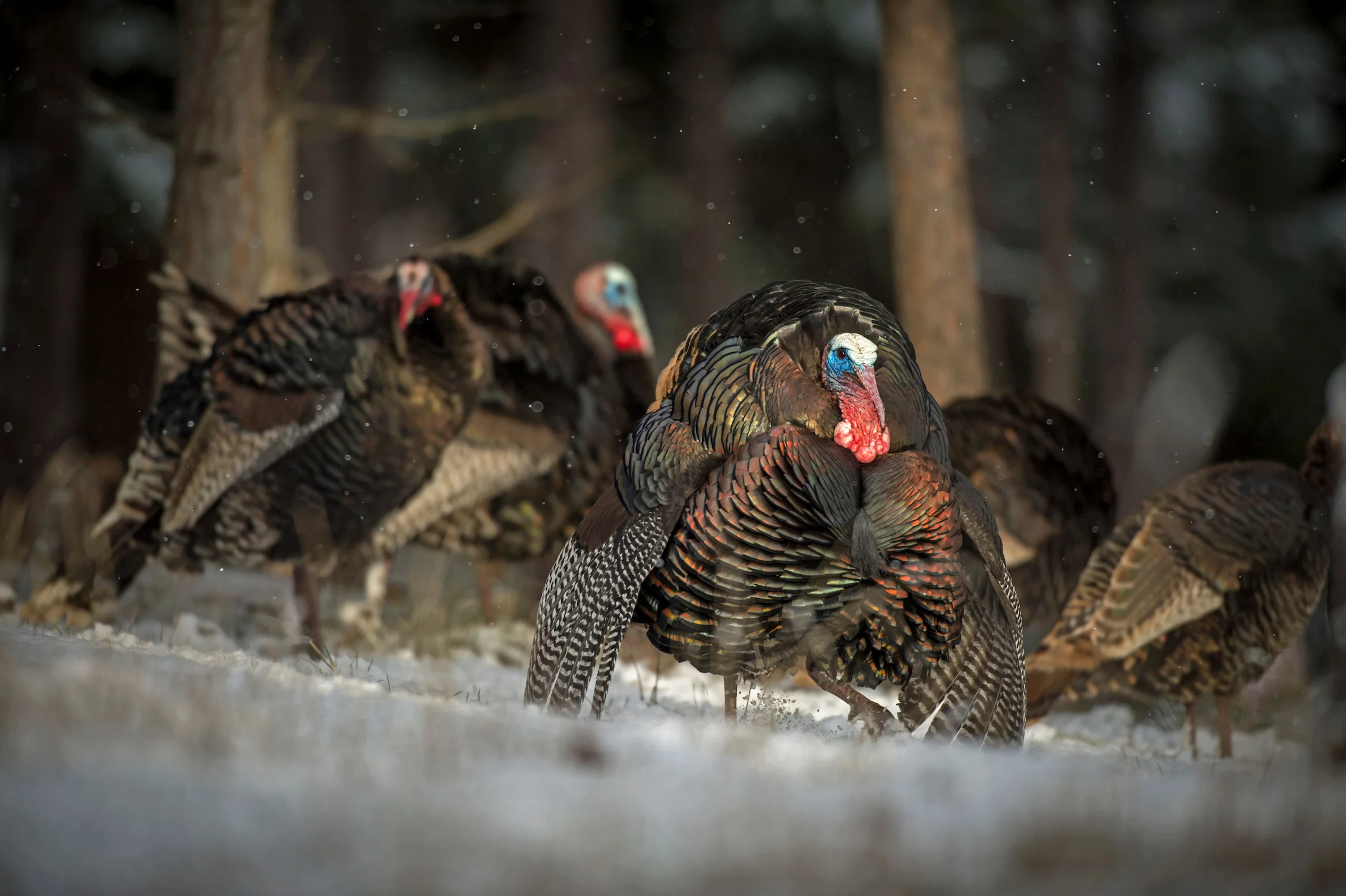
This occurs early in the season in most states, although, depending on weather, it could already be in the rearview by the time hunters take to the woods. During pre-breeding, birds are still flocked up to some degree and, with a few exceptions, breeding hasn't started yet. Instead, birds of both sexes hang together and sort out dominance issues. You'll hear gobbling, fighting purrs, and aggressive yelping as birds squabble and sort out who’s-the-boss issues.
Early Breeding

As the name of this phase implies, the first of the hens become available for breeding now, and it results in some dramatic changes in flock behavior. Dominant toms and prime-age hens dominate the initial phases of breeding. This results in a lot of frustrated jakes and younger toms running around trying to find love. “Buddy birds"—typically same-age gobblers and jakes—will run together, and the odds of calling in multiple gobblers on the same setup can be high. Gobbling activity remains solid, though older birds may only sound off a few times on the roost, then shut up for a time as hens run to them.
Peak Breeding

Similar to the “lockdown” that occurs in the whitetail rut, peak breeding can be a frustrating time for a turkey hunter. With an increasing number of hens ready to breed, virtually all the dominant gobblers are paired up, often for the better part of the day. It can take some patience and refined technique (which our experts can provide) to kill a boss gobbler now. Even 2-year-old toms—generally considered the most available longbeards out there—can be tough during this phase. Expect limited gobbling on the morning roost and only sporadic gobbling throughout the day.
Post-Peak Breeding

After 7-10 days of peak breeding, the hunting typically picks up a little. Roost hunts may remain difficult, as hens run to gobblers for love early before trotting to a nest to lay another egg. But mid- and late-morning hunting can start to heat up again. This is a period when a lot of hunters, burned out from the frustrations of peak breeding, can give up after a couple hours and go out for breakfast. That's a big mistake, as the chances of a gobbler finding himself alone as the sun rises higher, get better by the day.
Late Season
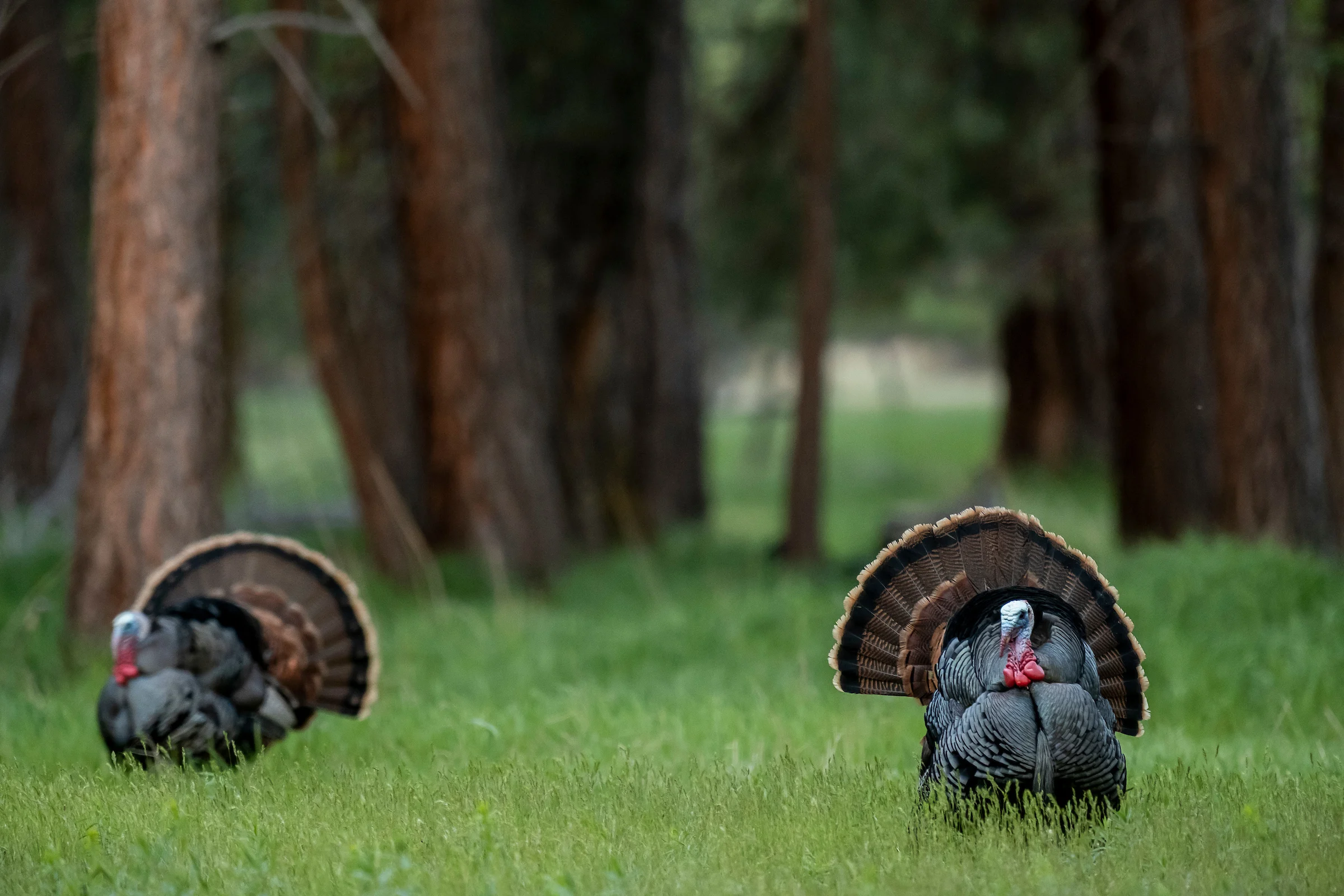
As the hunting season draws to a close, the vast majority of breeding activity is typically finished. Again, there are exceptions to this, such as when a large weather event has destroyed the first attempt at nesting by area hens and they seek out gobblers for a second try. But in most years, hens are spending their time on nests, and gobblers and jakes are even starting to form the small bachelor flocks they'll stay in through summer. That said, a gobbler is always eager to breed, and if he hears a receptive hen, he can be highly vulnerable to calling. The weather can be warm, the bugs might be out, and trees and shrubs are leafing out, but this can still be a prime time to tag a tom.
Related: The Best Turkey Shotguns of 2025
The Best Days to Hunt the 2025 Turkey Season

The above strut phases will take place at different times depending on where you live, of course. That's why we broke the country out into eight separate regions and, in all but one case, chose two different experts to represent each, upping the odds that their recommendations will line up perfectly in your neck of the woods. So, here they are: the regions, the experts, and their picks for the best days to hunt the 2025 spring gobbler season.
Northeast

Experts: Steve Sherk and Brett Ladeau
Credentials: Sherk is owner of Sherk’s Guide Service and puts hunters on trophy bucks and longbeards in Pennsylvania’s Allegheny Mountains. Ladeau is vice president of the Vermont State Chapter of the NWTF and a successful competition caller.
Best Days to Hunt the Northeast
May 2-6
May 8-12
Sherk likes the first five days of the season. As a public land hunter, he wants first crack at the toms he’s been scouting in the preseason before they feel too much pressure. He says breeding has started, but the chances of finding a tom roosted alone remain high. Ladeau picks any time during the first week of Vermont’s opener, as the birds are largely in pre-breeding mode and establishing pecking orders. The increased gobbling and yelping that accompanies that activity means he's always in the game.
Mid-South
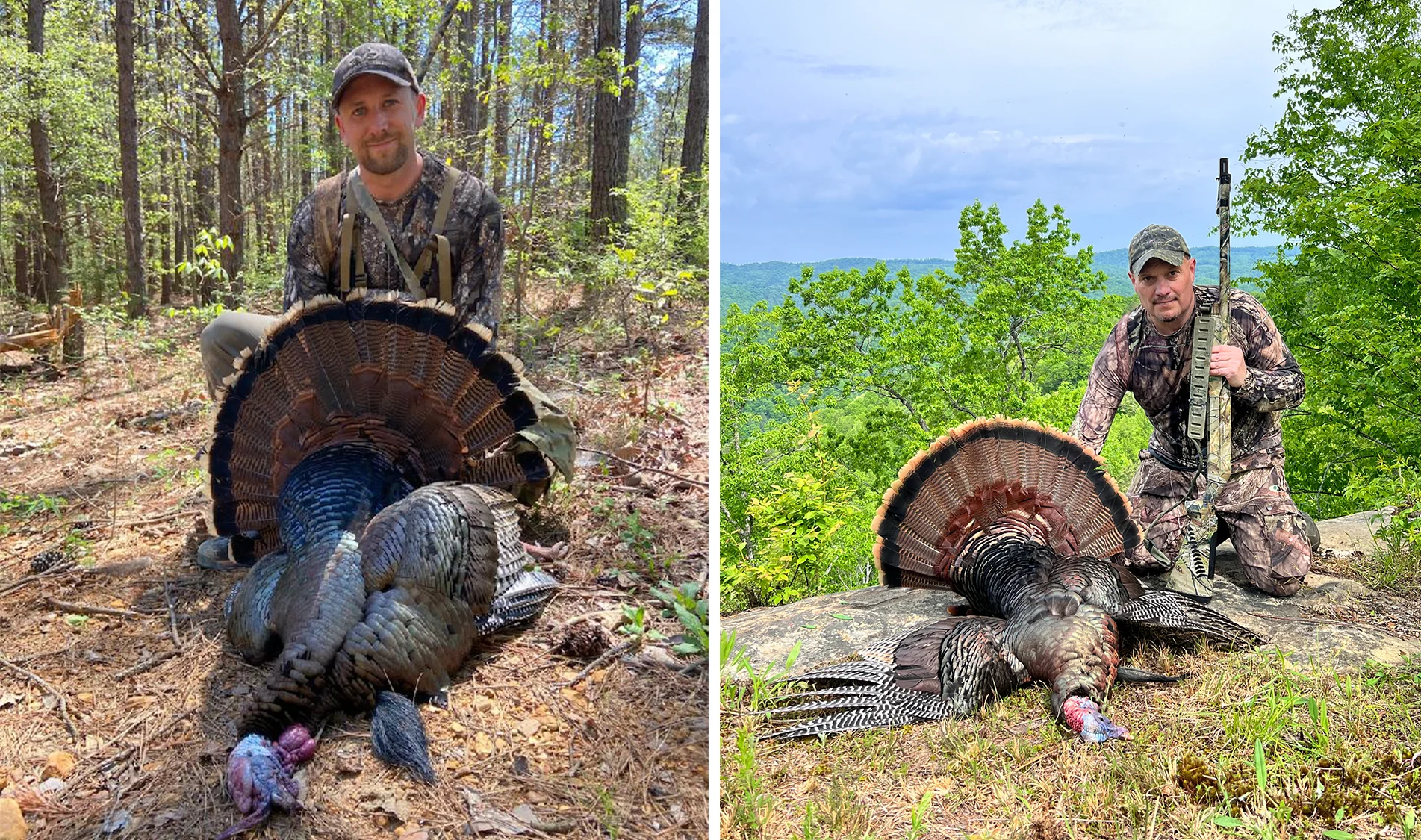
Experts: Will Brantley and Travis Faulkner
Credentials: Brantley is Field & Stream’s Hunting Editor and has been chasing gobblers in his native Kentucky and neighboring Tennessee since boyhood. He has also traveled across the country and notched several grand slams. Travis Faulkner is a widely-published outdoor writer and expert turkey and deer hunter from Kentucky; when he’s not tagging public-land toms from his home state, he’s traveling to chase them elsewhere.
Best Times to Hunt the Mid-South
April 28-30
May 1-5
Brantley is primarily a public-lands hunter who seeks out weekday hunting periods, as they offer less competition. “This time frame is relatively late in the season, with most hens on the nest and gobblers getting a little desperate,” he says. Faulkner is torn when it comes to choosing his favorite time period. “We have peak gobbling early in our season, and it’s an awesome time to be in the timber, especially if you like to run and gun,” he says. “But if I want to kill the biggest tom of the year and not have to deal with much competition, I’ll pick that last week of the season. I hunt a lot of public land, and most guys have given up for the year. And by then, I’ll have figured out strut zones and other patterns of mature gobblers and be able to call up a bird that was difficult before.”
Deep South

Experts: Phillip Vanderpool and Ricky Joe Bishop
Credentials: Vanderpool is host of The Virtue TV series and a Woodhaven Custom Calls pro-staffer. He’s killed over 100 gobblers with bow and many more with shotgun. Bishop is a decorated competitive caller who’s won the Grand Nationals twice; he continues to build calls and has hunted gobblers all over the country.
Best Days to Hunt the Deep South
March 2-6
March 29-April 2
Though he hails from Arkansas, Vanderpool often kick-starts his season in Florida and expects good action on their early-March opening week. “The weather has been good there, and I expect the birds to be active and vocal as the first hens come in,” he says. Bishop will open the Georgia season on private lands and enjoys the first 3-5 days of the hunt as he’s typically scouted several toms in the preseason. “The first part of the season is for private-land hunting only,” Bishop notes, “but there’s always plenty of hunting pressure, so it’s nice to get on birds early.”
Midwest

Experts: Steve Stoltz and Tad Brown
Credentials: Stoltz is one of the nation’s most decorated competition callers, with 44 years of experience and a win or place in over 200 calling contests. The Woodhaven Custom Calls pro-staffer hails from Missouri but travels extensively to chase gobblers. Brown was one of the first employees Mark Drury selected when he started M.A.D calls in the 1980s and has remained an active call designer ever since. The current production manager for H.S. Calls, Brown is a Missouri native that has hunted gobblers across the U.S. in a hunting career that’s spanned over four decades.
Best Days to Hunt the Midwest
May 1-5
May 8-11
Stoltz loves the first week of May in his region for several reasons, but chief among them is that the birds are sliding past the breeding peak and gobblers are back to searching hard for hens. “The other thing I love about this time frame is that foliage is coming out on trees and shrubs, allowing me a greater ability to move on a gobbler,” he says. “It’s always easier to call up a tom when you can get tight to him, or reposition if he’s not coming right in.”
Brown likes a slightly later time frame. "The majority of hens are on the nest by the second week of May, and gobblers are finally realizing they're going to have to move to find a girlfriend," he says. "I also like this period because the chances of killing a mature gobbler are good, and there are fewer hunters out."
Upper Midwest

Experts: Shane Simpson and Brian Lovett
Credentials: Owner of the website and Youtube channel Calling All Turkeys, Simpson also offers a line of popular turkey calls. He lives in Minnesota but has chased gobblers across the continent. Brian Lovett is a veteran outdoor writer and editor who’s been writing about turkey hunting for more than three decades. Lovett hails from Wisconsin but has traveled the country in pursuit of gobblers; he’s taken multiple grand slams and a royal slam.
Best Days to Hunt the Upper Midwest
April 30-May 3
May 10-14
Unlike many of his peers, Lovett actually prefers to hunt when breeding is nearing its peak. “I know there’ll be a lot of henned-up gobblers, but there will also be enough by themselves to make things interesting,” he says. “Like any phase of the season, I like to roost a tom the night before and get as tight as possible in the morning. Even if he’s with a hen, I’m solidly in the game. Simpson likes to hit the woods of Minnesota and Wisconsin about a week later, when he feels the breeding peak is on the downswing. “I always see a flurry of activity then, as hens start to nest and toms run out of girls by mid-morning,” he says. “I also think some jennies (young hens) are coming into heat and ready to breed, which creates more excitement among gobblers.”
Plains States
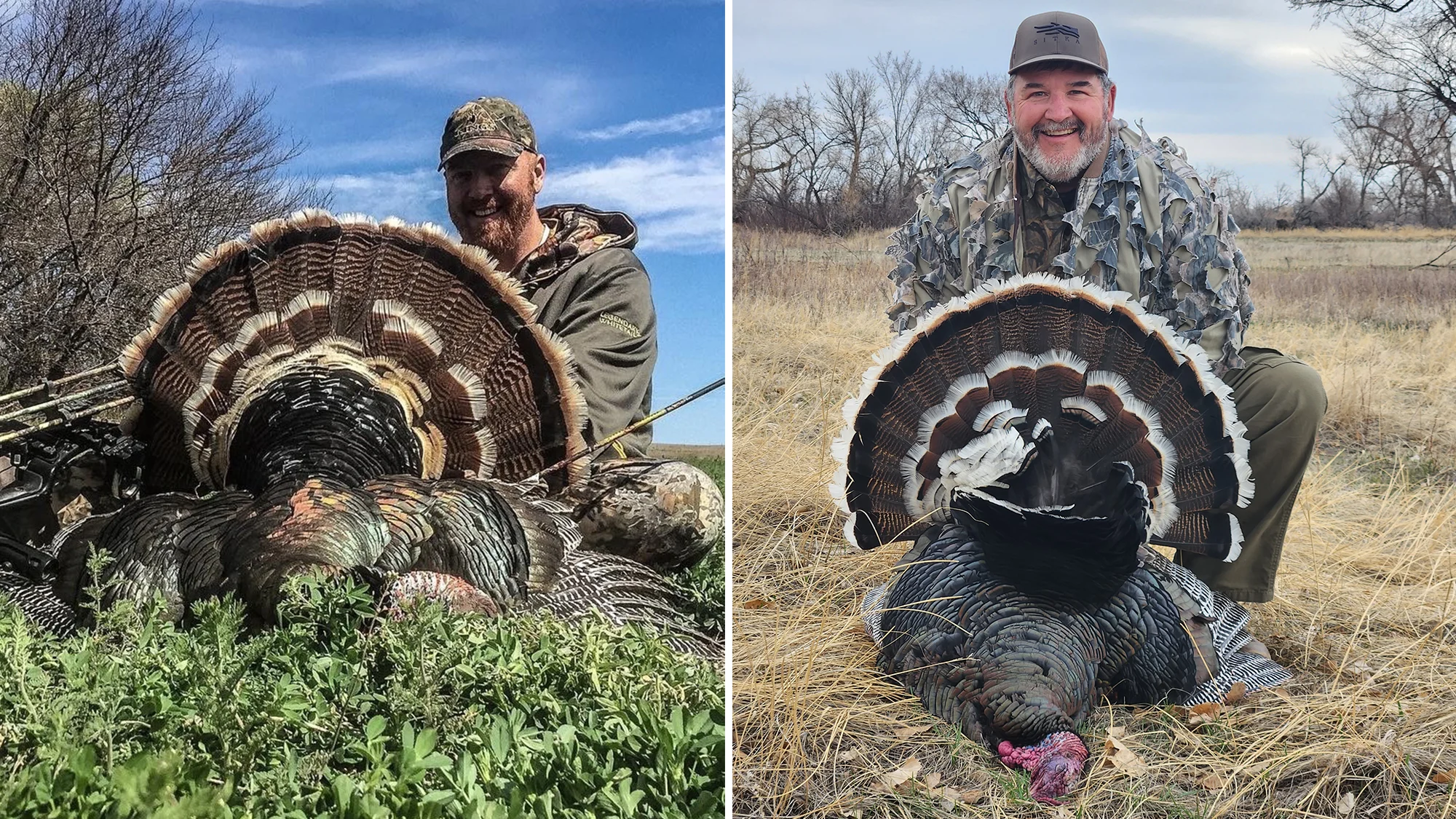
Experts: Tim Clark and Dave Ciani
Credentials: Clark is the owner of Red Dog Outfitters, where he puts hunters on trophy whitetails, mule deer, and Rio Grande gobblers. He also runs hunts in neighboring Nebraska, and clients in both states enjoy very high success hunts. Dave Ciani owns High Prairie Lodge and Outfitters in South Dakota where he guides for waterfowl, upland birds, and big game in the fall, and for Merriam’s gobblers in the gorgeous Black Hills each spring.
Best Days to Hunt the Plains
April 20-25
May 28-31
Clarks’ hunters kill toms throughout the long Kansas season, but his favorite window is the third week of April. “The reason I love that time frame is the weather is so consistent," he says. "Go earlier and you can deal with cold and snow, and later in the season, we’re famous for pop-up thunderstorms that can get nasty. We kill gobblers through patience, so being able to hunt all day makes a huge difference.” Ciani prefers the last handful of days in South Dakota’s long season, for many of the same reasons. “Merriams are highly social birds and I feel every gobbler is going to spend part of every day with hens,” he says. “So I just like the nicer weather of the last week, and all the previous weeks of being out there has shown me where to find birds.”
Rocky Mountain West

Expert: Jace Bauserman
Credentials: A regular F&S contributer, Bauserman is a well-known and prolific outdoor writer. He hails from Colorado but has hunted throughout the Rocky Mountain West and travels all around the country to chase spring gobblers.
Best Days to Hunt the West
April 15-18
May 15-17
Bauserman's top pick for chasing the West's Merriam's turkey falls at the beginning of most seasons in his region. "Winter's grasp has loosened by then, and nomadic Merriam gobblers are firing on all cylinders," he says. "In many western locales, it's not uncommon for Merriam toms to walk miles each day in search of a willing hen. I like to gain a vantage point, listen, and be ready to get loud on a high-volume box call or slate."
His second-favorite time is mid-May. "Time is running out for toms to pass on their genes, and though most hens have been bred, gobblers will continue to come to calls—from ridiculous distances—if they think a hen is looking for love."
Related: How to Hunt Pure Merriam's Turkeys in the West
Southwest
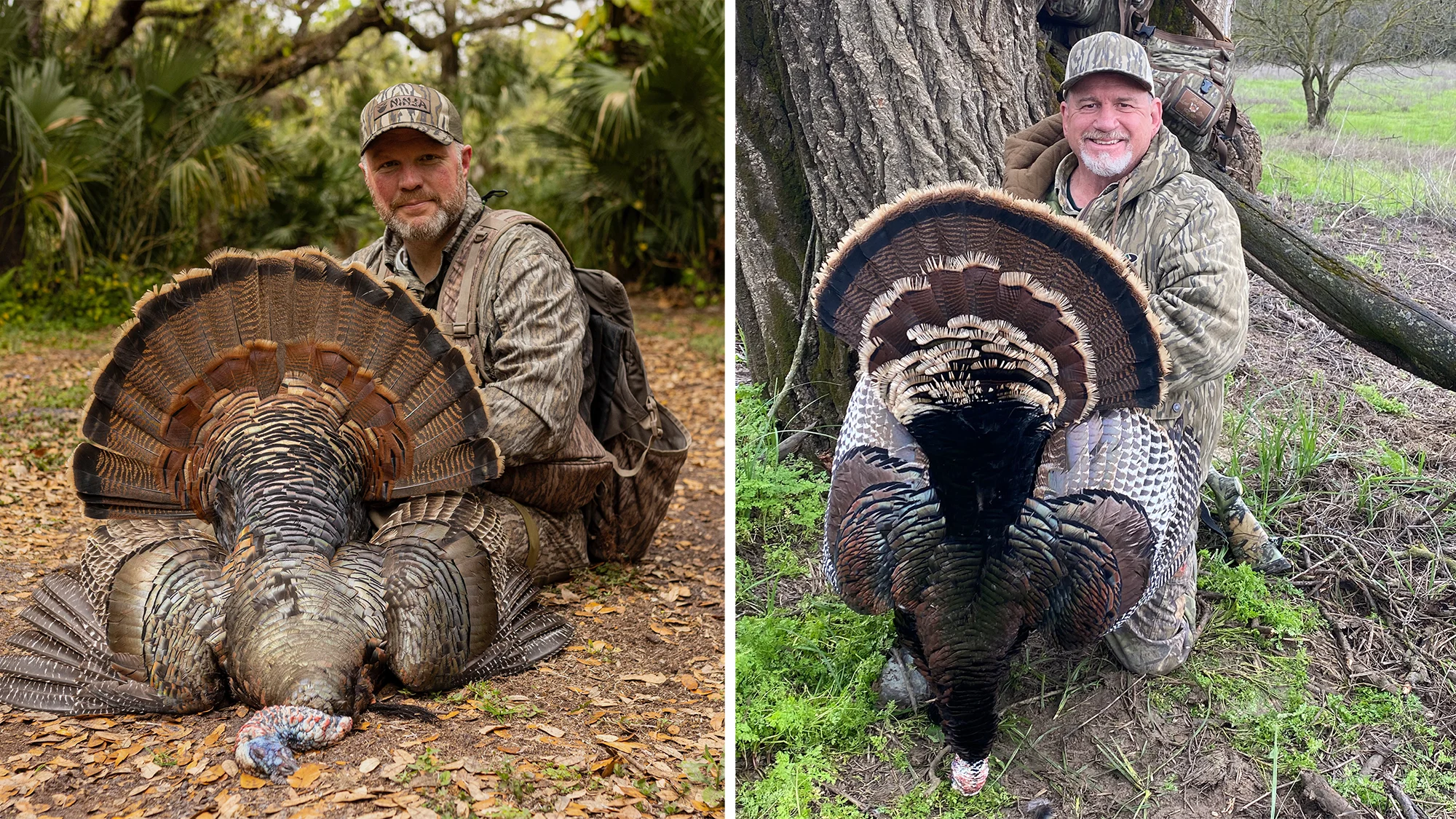
Experts: Mark Scroggins and Joe Slaton
Credentials: A former competition caller, Scroggins is the marketing director for Woodhaven Custom Calls and hosts the TV show The Fever. He also guides in Oklahoma and neighboring Texas. Slaton is a California-based hunter with decades of experience and an impressive resume in calling competitions; he’s won the NWTF’s gobbling competition twice and placed in the top three 10 times.
Best Days to Hunt the Southwest
April 8-12
May 3-6
Slaton notes that Rio Grande turkeys in his area will have been breeding since March, and hens will start breaking free around April 8. “We open March 29, and lots of hunters want first crack at gobblers,” he says. “But I’d go a little every time, especially if you have time to devote to later morning and afternoon hunts, when there are more lonely gobblers on the landscape.” Scroggins chose early May as his go-to week for the same reason as many other experts. “Whether I’m in Oklahoma or Texas, that’s typically a time frame when you can count on pretty consistent nice weather, and that makes hunting more fun and the birds more active,” he says. “Also, we’re usually past peak breeding and the toms are looking for receptive hens, especially later in the morning.”
Pacific Northwest

Experts: Garry Greenwalt and Scott Haugen
Credentials: Greenwalt is a former deer, elk, and turkey outfitter who turned his passion for calling game into a successful call making business. He hails from Washington but also travels widely to hunt turkeys. Scott Haugen is a longtime and widely published outdoor writer and photographer who grew up in western Oregon. Though he’s hunted across the globe, Haugen’s favorite turkey hunts happen in the mountains near his home.
Best Days to Hunt the Pacific Northwest
April 15-20
Both Greenwalt and Haugen like the first five days of the season. Their scouting tactics and patience in the timber allow them to get on gobblers even as breeding nears its peak, a time when other hunters struggle. “Most hens have been bred, but they’re not yet sitting on nests,” Haugen says. “They’ll roost right with gobblers, feed, and then go lay another egg. When hens slip away, that’s when toms go on walkabouts looking for another hen.” Greenwalt agrees on the importance of mid- to late-morning hunting and, if it seems like gobblers are getting henned up, “I either ramp up my run-and-gun efforts, or I’ll just post up in a known travel route,” he says. “I do a lot of bowhunting, so I’m staking out a full-strut deke with hens and tucking back in some cover where I can draw undetected when a tom comes in.”
Related: Best .410 Turkey Shotguns


